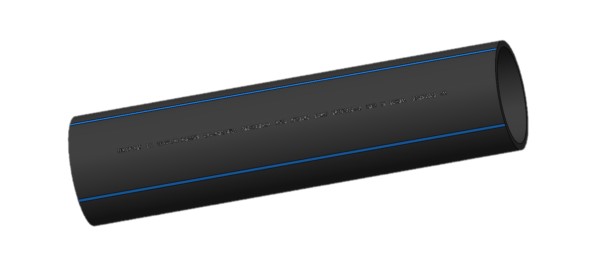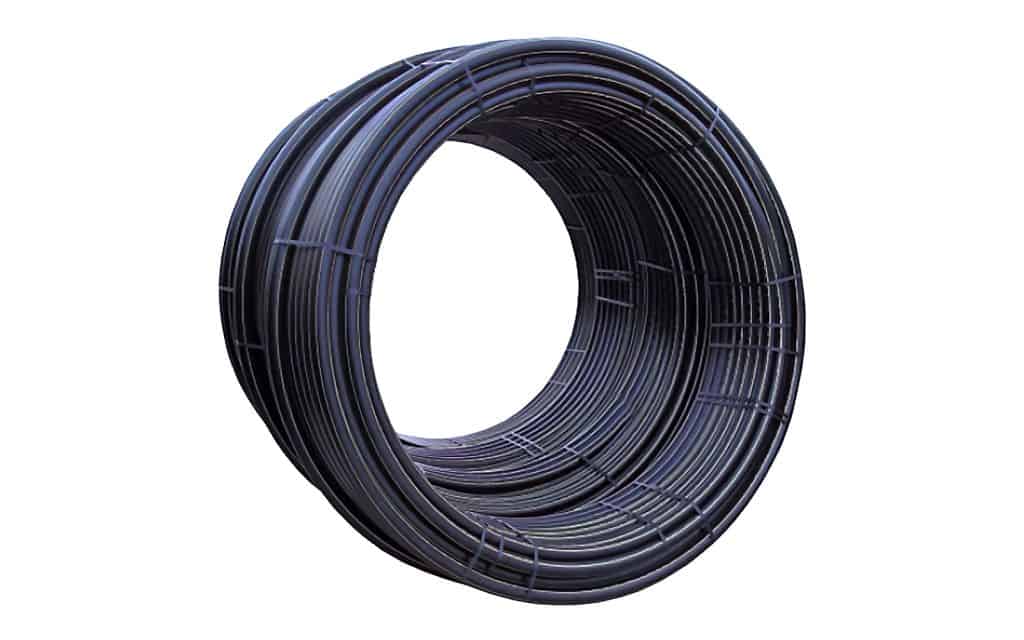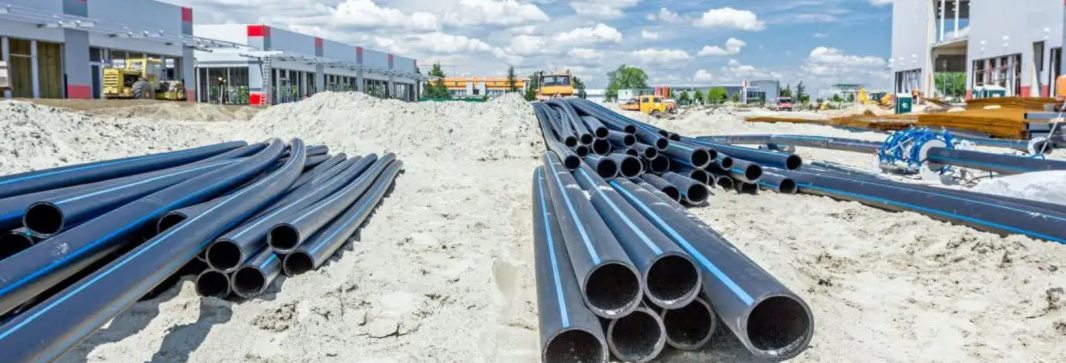HDPE water pressure pipes
Polyethylene water pressure pipes are produced by extruding polyethylene granules (PE80 or PE100). High density (HD) polyethylene is a thermoplastic polymer made of ethylene. HDPE pipes are characterized by a very good mechanical behaviour, excellent chemical resistance, resistance to UV radiation, corrosion and abrasion, as well as to low temperatures.
Pipes for transporting water are black-homogeneous and opaque, being marked with blue longitudinal stripes (for water), offset at 90°. Polyethylene pipes have a smooth inner and outer surface, are flexible and resistant to outdoor temperatures up to -30°C.
Service life is estimated to at least 50 years in case of compliance with the pressure and temperature conditions, as well as the installation technology.
Areas of use of PE pipes and fittings: drinking water distribution networks for domestic and industrial consumers; irrigation networks and water management; sewerage networks, built either in gravity system or under pressure; indoor sewer networks for constructions; transport of food or industrial liquids. See also Gas pressure pipes.
Polyethylene pipes are produced by extruding polyethylene granules (PE80 or PE100). Pipes are black-homogeneous and opaque, being marked with blue longitudinal stripes (for water) and yellow (for gas), offset at 90°. Polyethylene pipes have a smooth inner and outer surface, are flexible and resistant to outdoor temperatures up to -30°C.TeraPlast Deposits Map
These have many areas of use, out of which we specify:
- drinking water distribution networks for domestic and industrial consumers; irrigation networks and water management;
- sewage networks either in gravity or under pressure;
- internal sewage networks for construction;
- protection systems for electric cables;
- transport of food or industrial liquids;
- protection pipes in pre-insulated thermal systems.


